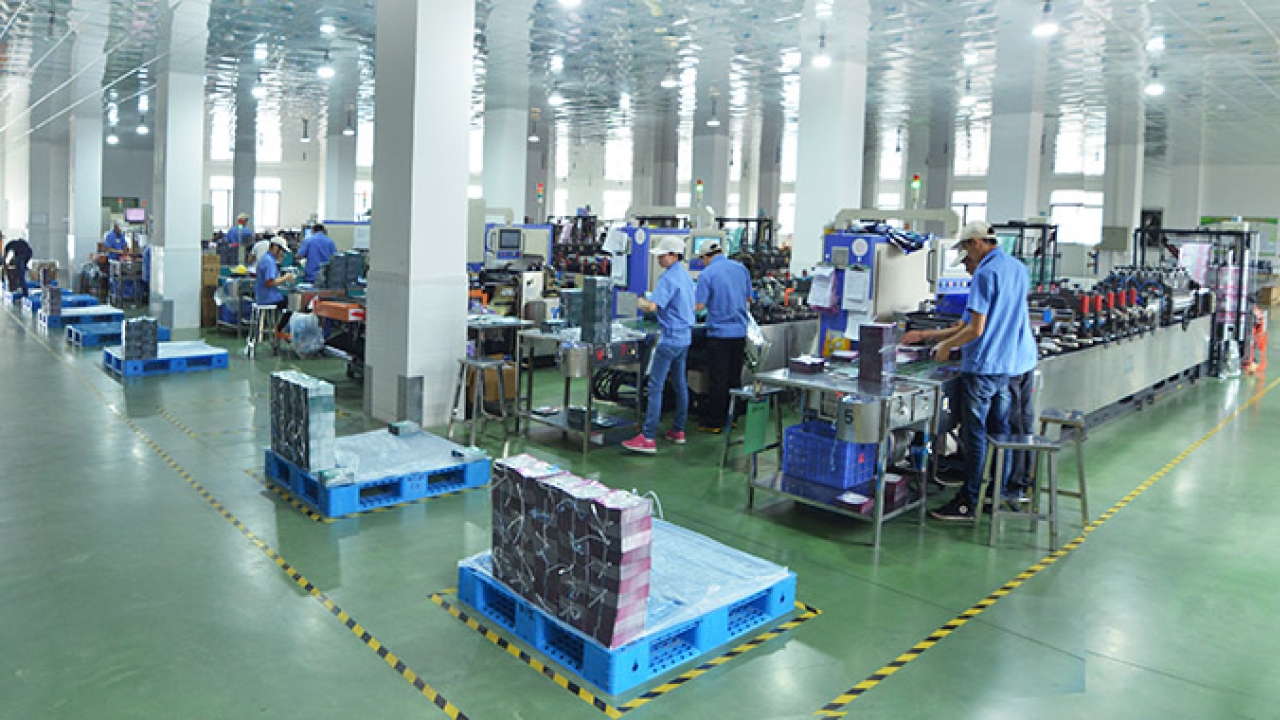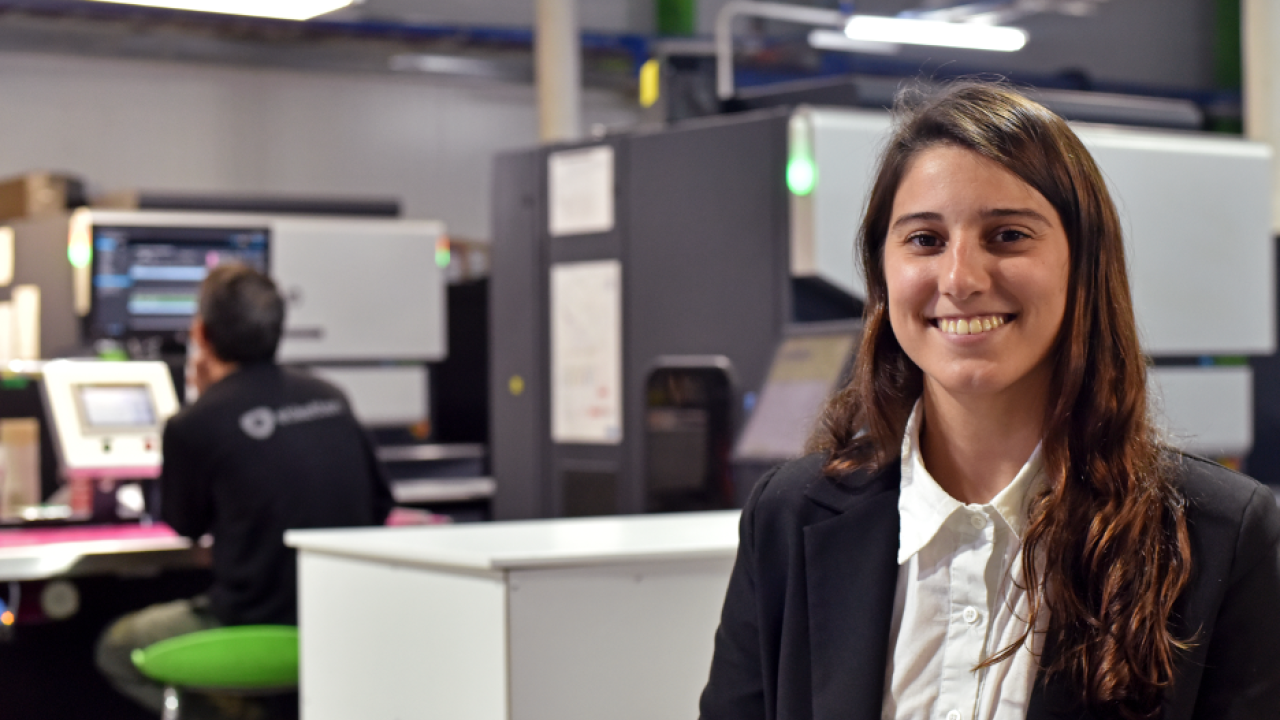Environmental protection drives Guangdong Yingcai growth

Indeed, Guangdong Yingcai is seen as a model enterprise for environmental protection and waste treatment in China’s domestic flexible packaging industry, and recently invited representatives of flexible packaging converters from 35 provinces in China to learn from their experience.
Feng Fuqiang is founder and general manager of Guangdong Yingcai. He says the company has always been a pioneer in environmental protection. As early as 2012, Guangdong Yingcai had introduced solvent-free lamination technology from Sinomech Corporation and successfully overcome the difficulties in industrial-scale solvent-free vacuum metallizing and aluminum foil lamination. In addition, they mastered the key process of solvent-free lamination for oven-ready packaging. At present, all the flexible packaging products produced by Guangdong Yingcai use solvent-free lamination, significantly reducing overall VOC emissions.
"We need to completely change the public's impression that the printing industry is a heavy polluter. And this needs to start from one company at a time taking environmental protection as the top priority for future development. Only in this way can individual converters build their own core competitiveness."
At the end of 2012, Guangdong Yingcai held its first open house event to share this technology and experience with other flexible packaging companies with the assistance of Sinomech Corporation, as Feng Fuqiang proudly remembers: ‘Driven by both of our efforts, Sinomech Corporation sold 80 solvent-free laminating machines in the next year and Guangdong Yingcai became one of the drafters of national standards for the solvent-free lamination process.’
Feng Fuqiang emphasizes that effective VOC emission control means looking at all aspects of the printing and production process. On the printing side, the VOC control system adopted by Guangdong Yingcai follows the catalytic cracking principle: warming first by natural gas to crack the VOCs emitted during the printing process under a high temperature of 600-700 deg C, which separates the VOCs into carbon dioxide and water. Currently the company is treating over 90 percent of its VOC emissions using this technology.
This VOC treatment process is also promoting energy saving throughout the company, as Feng Fuqiang explains. ‘All the heat produced during the cracking reaction will be collected and used to meet the production requirements of the workshops by means of a closed-loop heat recycling system, which could make us almost self-sufficient in terms of energy requirements.
‘From a long-term development point of view, environmental protection and sustainable development will not impose a cost burden on our enterprise. On the contrary, social responsibility will bring to our company more premium brand customers.’
Feng Fuqiang has very clear views on the wider importance of environment protection. ‘We need to completely change the public’s impression that the printing industry is a heavy polluter. And this needs to start from one company at a time taking environmental protection as the top priority for future development. Only in this way can individual converters build their own core competitiveness.’
"Gravure ink technology has still not matured in flexible packaging applications. Flexible packaging products are mainly made of laminated film materials which are easily deformed in the presence of heat, so drying of ink remains a big problem."
Feng Fuqiang has also sought to control VOCs from the company’s downstream suppliers. As early as 2014 he was focusing on gravure ink. He opened a dialogue with technicians from gravure ink suppliers, allowing them to conduct field tests in his factory. ‘However, gravure ink technology has still not matured in flexible packaging applications. Flexible packaging products are mainly made of laminated film materials which are easily deformed in the presence of heat, so drying of ink remains a big problem.’
Company history
Feng Fuqiang built Guangdong Yingcai from scratch, so understands well the difficulties encountered in growing a company with an environmental focus. He divides the process into three stages.
1. Start-up from scratch
China entered the World Trade Organization in 2001, opening up its economy to both domestic and global competition. The industries in the Pearl River Delta, including the printing industries, were at the forefront of this process and faced unprecedented opportunities as well as new challenges.
‘There were huge market demands for flexible packaging products at that time. There were not so many competitors as now and profit rates were much higher,’ recalls Feng Fuqiang.
Feng Fuqiang raised 200,000 RMB (28,400 USD) that year and built a small company composed of eight people. ‘Funds were quite limited at that time and even the 100sqm workshop was rented.’ He recalls this time as a good experience. ‘We were using conventional manual equipment with quite low efficiency and a high dependence on operators’ experience and skills.’
As the market grew, by 2003 Guangdong Yingcai had expanded to nearly 50 employees and floor space increased ten times to more than 1,000sqm.
2. Acquisition and expansion
2007 was a milestone year in Guangdong Yingcai’s history. In 2007 the company had fixed assets exceeding 30 million RMB (4.25 million USD) , but still didn’t own its workshop. Just as Feng Fuqiang was worrying about this, a perfect acquisition opportunity presented itself. After repeatedly weighing the possibilities, Feng Fuqiang raised 50 million RMB (7.1 million USD) and purchased the workshop, facilities and personnel in one package.
In 2008 Guangdong Yingcai moved all its existing facilities and employees to the new factory, at South Longsheng road, Shunde District, Foshan, Guangdong province – which is where Guangdong Yingcai is located today.
3. Scale development
Guangdong Yingcai then entered the scale-up development stage. The company purchased more accurate measurement equipment, including chromatography, tension and heat-seal instruments to control quality more strictly across all production processes.
They learned from the world class management model of Amcor Flexibles and introduced an ERP management system, raising the automation level of the workshop and lowering time and labor cost penalties, substantially enhancing production efficiency and yield. They also replanned the workshop, dividing it into several independent operations such as film blowing, printing, laminating, curing, pouching and testing.
After years of retrofit and development, Guangdong Yingcai successively obtained its ISO9001:2015 quality management certification, QS Industry Manufacturing License and BRC certification. The company was repeatedly awarded regional and nationwide quality and ‘model enterprise’ awards for its aluminum foil composite film, aluminized composite film and food packaging and took up leadership positions in local Guangdong industry associations.
Today Guangdong Yingcai has nearly 300 employees with 2018 sales of 200 million RMB (28.42 million USD). Its products cover a wide range of end use applications including food, household chemicals, cosmetics, pet foods and infant and maternal goods. The company’s customers are spread across China and Europe, North America and Southeast Asia, with key accounts including L’Oreal, Carrefour, Liebe Baby, Garnier, JVR, Watsons, Be&Cheery, Wufangzhai and Bestore.
Future development
Feng Fuqiang concludes that, in general, the market demand for flexible packaging products is still increasing, particularly across the household chemicals and food – including pet food – sectors. ‘Brand owners and consumers increasingly prefer the easy shipping and storage of portable and light flexible packages. This undoubtedly will bring more opportunities for flexible packaging companies.
‘But this doesn’t mean all flexible packaging companies will keep growing. Increasingly sophisticated market competition will push companies to upgrade constantly. Only by keeping a watchful eye on market trends and meeting market requirements can companies remain competitive and achieve a rapid growth in the future.’
This is the target Guangdong Yingcai continues striving to meet.
Stay up to date
Subscribe to the free Label News newsletter and receive the latest content every week. We'll never share your email address.


